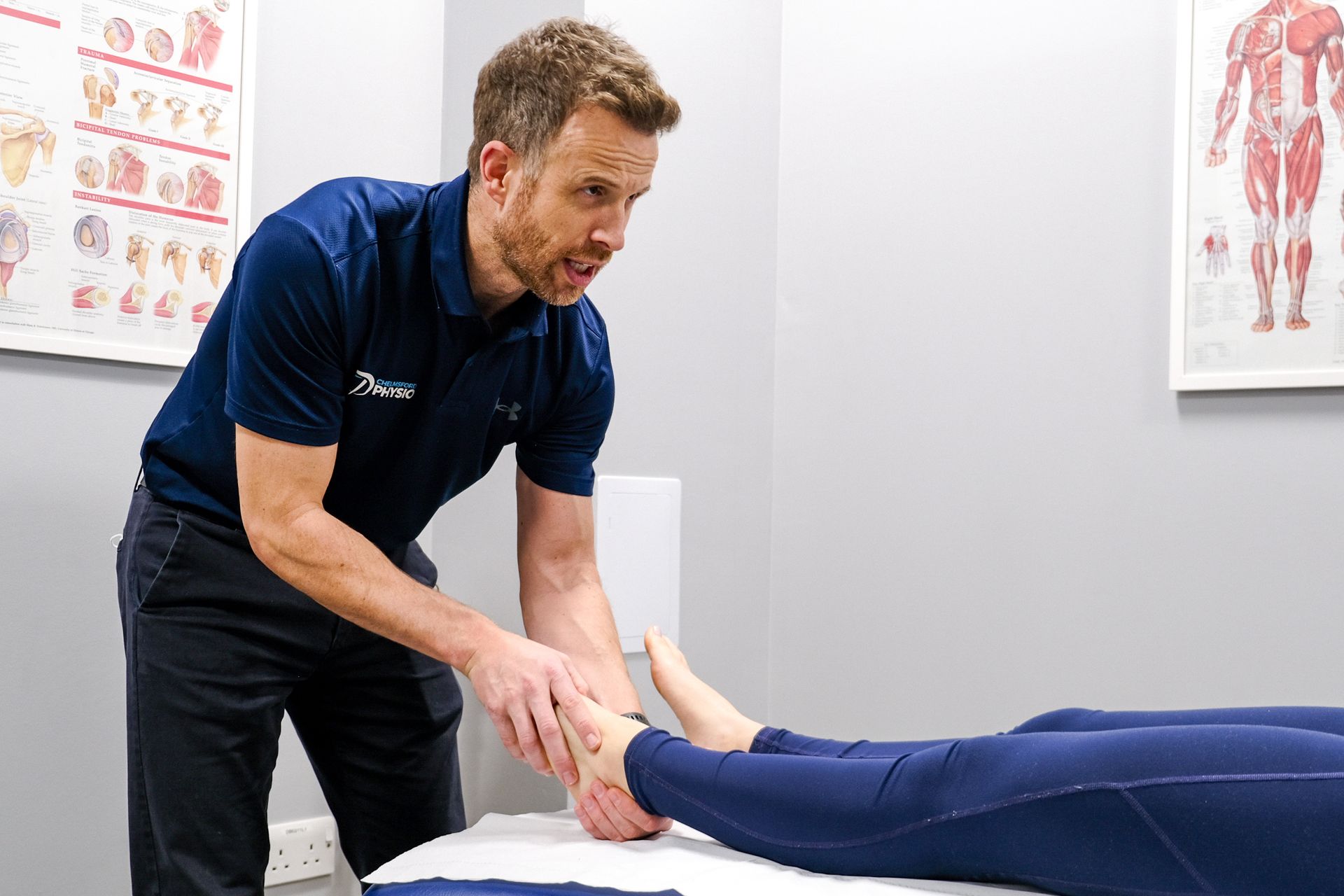Take a Step Towards Better Health: How Podiatry Can Improve Your Pain & Performance!
Podiatry is a branch of medicine that focuses on the diagnosis and treatment of foot and ankle disorders, as well as assessing lower limb biomechanics and how that affects the whole lower limb. One of the most important tools in podiatry is pressure plate technology, which allows podiatrists to analyze the pressure distribution and force exerted on the foot during walking and running.
At Chelmsford Physio, we offer an innovative solution for identifying changes in foot posture and lower limb biomechanics using state-of-the-art pressure plate technology. By understanding how your feet adapt when you experience pain, we can help to alleviate discomfort through a combination of podiatry and physiotherapy. We also provide personalised recommendations for footwear and foot posture to help prevent future injuries.

Pressure plate technology works by using sensors embedded in a plate that the patient walks or runs on. The sensors measure the pressure distribution and force exerted by the foot, and this information is then used to create a detailed analysis of the patient's gait. This analysis can be used to identify foot and ankle disorders, such as plantar fasciitis and flat feet, and to develop a treatment plan that is tailored to the patient's specific needs.
One of the key benefits of pressure plate technology is that it provides objective data that can be used to monitor the effectiveness of treatment over time. For example, if a patient is undergoing physical therapy for plantar fasciitis, the pressure plate can be used to track changes in the pressure distribution and force exerted by the foot as the patient's condition improves.
In addition to its diagnostic and monitoring capabilities, pressure plate technology can also be used to develop custom orthotics and footwear that are specifically designed to address the patient's unique needs. By analysing the pressure distribution and force exerted by the foot, podiatrists can identify areas of the foot that are under stress and design orthotics and footwear that redistribute pressure and provide support where it is needed most.
Research has shown that pressure plate technology is a highly effective tool for diagnosing and treating foot and ankle disorders. In one study, researchers found that pressure plate technology was able to accurately diagnose plantar fasciitis in 89% of cases, compared to just 60% accuracy with clinical examination alone (1). Another study found that the use of pressure plate technology in combination with custom orthotics led to significant improvements in pain and function for patients with plantar fasciitis (2).

In conclusion, pressure plate technology is a powerful tool that is revolutionizing the field of podiatry. By providing objective data on the pressure distribution and force exerted by the foot, this technology allows podiatrists to diagnose foot and ankle disorders with greater accuracy, monitor the effectiveness of treatment over time, and develop custom orthotics and footwear that are tailored to the patient's specific needs.
Our goal at Chelmsford Physio is to not only help alleviate your pain but to empower you with the knowledge and tools to prevent future injuries. By understanding how your feet adapt to pain and how to maintain proper foot posture, you can avoid further discomfort and improve your overall quality of life.
To find out more and to book an appointment visit us below:
https://www.chelmsfordphysio.co.uk/podiatry
Chelmsford Physio
Riverside Leisure Centre, Victoria Rd, Chelmsford CM1 1FG



